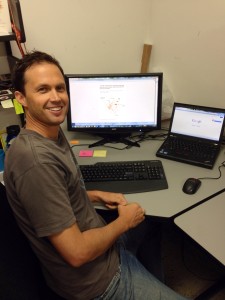Well, all I can say is that it’s not every day that you wake up to three articles on genebanks in The Economist:
Nibbles: Tomato diversity, Coffee trial, Basque genetics, Water and ag, Heirlooms galore, 3 trillion trees, Agroforestry, Old oats, IP in ag, Food companies and CC, Wheat Initiative, Crop game, Eggplant breeding, E African drought
- One crazy French guy, 1134 tomato varieties.
- The World Coffee Research International Multi Location Variety Trial really gets off the grounds. See what I did there?
- The Basques descend from Neolithic farmers.
- Ancient Sri Lankan irrigation systems. Which Bangladesh doesn’t need.
- National Heirloom Expo is on.
- Did we link to this three-trillion-tree story yet? I don’t think so. How many are edible fruit trees, I wonder?
- …or indeed agroforestry and fertilizer trees. Always worth listening to Jules Pretty.
- So much for the Paleolithic Diet.
- In agricultural innovation, “optimal IPR use depends on the technology itself as well as on market conditions.”
- Multinational food companies found to be short-sighted shock.
- The global impacts of UK food consumption.
- The Wheat Initiative has an agenda.
- Can you recognize these crops? ‘Course you can.
- Eggplant pre-breeding project involving wild relatives makes mainstream media. Faith in humanity restored. Until you see what else is on that page.
- Drought hits Ethiopia. Let them eat sweet potatoes?
Colin gets doctored
 Our friend and occasional contributor Colin Khoury has successfully defended his PhD thesis at Wageningen University. As spelled out in a nice summary over at CIAT, where he was a visiting researcher, Colin’s work addressed four crucial questions dear to our hearts here at the blog:
Our friend and occasional contributor Colin Khoury has successfully defended his PhD thesis at Wageningen University. As spelled out in a nice summary over at CIAT, where he was a visiting researcher, Colin’s work addressed four crucial questions dear to our hearts here at the blog:
(1) What is the status of diversity in our food systems, and where are the greatest vulnerabilities?
(2) Where can genetic diversity be found that can be useful in increasing productivity and mitigating these vulnerabilities?
(3) Is this genetic diversity available in the present and in the long term?, and
(4) What steps are needed to improve the ability for researchers to access genetic resources critical for present and future crop improvement?
Congratulations, Colin, and best wishes for the future.
Brainfood: Protein in Amazon, Ponies in UK & US, Old wheats, Resistant filberts, Buying local breeds, Chickpea roots, Beet diversity, Italian goats, Mung bean improvement
- From fish and bushmeat to chicken nuggets: the nutrition transition in a continuum from rural to urban settings in the Colombian Amazon region. More fish and bushmeat in rural areas compared to towns, where they are considered luxuries. Industrial chicken reaching rural areas, though, and that’s bad for nutrition.
- Comparative genetic diversity in a sample of pony breeds from the U.K. and North America: a case study in the conservation of global genetic resources. Mother and daughter populations of breeds in the UK and US respectively turned out to be somewhat genetically different.
- Do “ancient” wheat species differ from modern bread wheat in their contents of bioactive components? No.
- Marine reserves help preserve genetic diversity after impacts derived from climate variability: Lessons from the pink abalone in Baja California. More protection, more diversity.
- Sources of resistance to eastern filbert blight in hazelnuts from the Republic of Georgia. 79 plants from 34 seedlots out of 1374 seedlings from 50 seedlots. Hard row to hoe.
- Determinants of the intention to purchase an autochthonous local lamb breed: Spanish case study. People are lazy.
- Assessing Genetic Variability for Root Traits and Identification of Trait-Specific Germplasm in Chickpea Reference Set. 23 out of 300 accessions could be useful in breeding for better roots.
- Breeding patterns and cultivated beets origins by genetic diversity and linkage disequilibrium analyses. Fodder and sugar beets grouped together, separated from garden and sea beets, in worldwide genebank collection but not in elite lines.
- Genetic diversity of Italian goat breeds assessed with a medium-density SNP chip. As with so much else in Italy, goat diversity follows a N-S pattern.
- Genomic resources in mungbean for future breeding programs. A couple of reference genomes will make everything easier.
CIMMYT genebank goes solar

I’m not sure how many genebanks around the world are run on solar power, but it’s not that many. The Millennium Seed Bank is one. Please drop me a line if you know of any other.